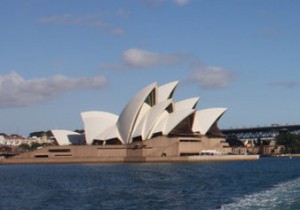World Heritage … our heritage – Updated Commentary in TLA
The World Heritage Committee recently put Australian governments on notice to keep and build upon their promises to protect the Great Barrier Reef from further decline. This act turned a light on the work of the Committee.
The Committee operates under the Convention Concerning the Protection of the World Cultural and Natural Heritage (World Heritage Convention) (1972) 1037 UNTS 151; 11 ILM 1358; [1975] ATS 47, as an intergovernmental body whose purpose is to protect the World’s heritage – both natural and cultural.
To do this, the Committee maintains the World Heritage List of properties. The Reef is one such property of natural heritage. Items of cultural heritage are also listed. For Australia, this includes convict sites, the Sydney Opera House, and the Royal Exhibition Building and Carlton Gardens in Melbourne.
[caption id="attachment_13872" align="alignright" width="300"] World Heritage is cultural as well as natural.
World Heritage is cultural as well as natural.
Image credit to Peter Sawyer, UK.[/caption]
Listed items of cultural heritage are those that accord with the World Heritage Convention’s meaning of “cultural heritage”. This includes buildings, cave dwellings, monumental sculptures and painting, and human-made sites of “outstanding universal value” in historical, artistic and scientific terms (Article 1).
The Committee also maintains a World Heritage in Danger List – the mechanism by which programs are developed, and funding provided, for countries to respond to the “serious and specific” dangers faced by properties on that list. It was over the question of whether the Reef should be included on the “in Danger” list, that the Committee made its decision in relation to the Reef.
The Environment Protection and Biodiversity Conservation Act 1999 (Cth) is the legislation through which Australia gives effect to its obligations under the World Heritage Convention. For example, s 12(1) provides that a person must not take action that will have a significant impact on the World Heritage values of a property listed on the World Heritage List or else civil penalties apply. Criminal sanctions apply for such action under s 15A.
Section 323 of the Act provides for the Environment Protection and Biodiversity Conservation Regulations 2000 (Cth) to prescribe principles for the management of natural and cultural heritage. Other sections of the Act variously provide for: the Commonwealth and the States and Territories having management plans for World Heritage properties; Commonwealth agencies acting in a way that is not inconsistent with the World Heritage Convention in relation to listed properties; and the Commonwealth giving financial or other assistance for the protection or conservation of listed World Heritage properties.
The Federal Government has committed Australia to protecting and rehabilitating the Reef, including through enhanced monitoring of the Reef and improvement in its water quality. Both the Federal and Queensland Governments have made commitments to ban the dumping of dredge spoil in Reef waters. The Committee gave the Federal Government until December 2016 to demonstrate that its plan to rescue the Reef is proving effective. It has been anticipated that if there is not marked improvement in the Reef’s health by 2020, the Committee will then declare it “in danger”. It seems the Committee also expects Australian governments, State and Federal, to provide increased financial support for protection of the Reef.
The Committee’s decision was made against a background of massive international and national public concern expressed about the health of the Reef, about half of it having been destroyed over many years due to the combined and interconnected effects of climate change, inadequate government planning, and agribusiness environmental practices. That impact is being compounded by port expansion and associated activities in Queensland – specifically, from dredging operations to create deeper channels to enable large coal, gas and other cargo bulk carrier ships to access ports like Gladstone. Coral colonies, species such as dugongs and turtles, and marine vegetation have experienced or face death and destruction due to the pollution and suffocating effects of millions – even tens of millions – of tonnes of sediments being released into Reef waters through dredging.
It would seem necessary that community pressure and activism always be tipped into the scales when protection of both natural and cultural heritage stands at odds with the imperatives of development.
Australian law on cultural heritage is discussed in the recently updated The Laws of Australia Subtitle 14.8 “Cultural Heritage”.
For more information about The Laws of Australia click here.